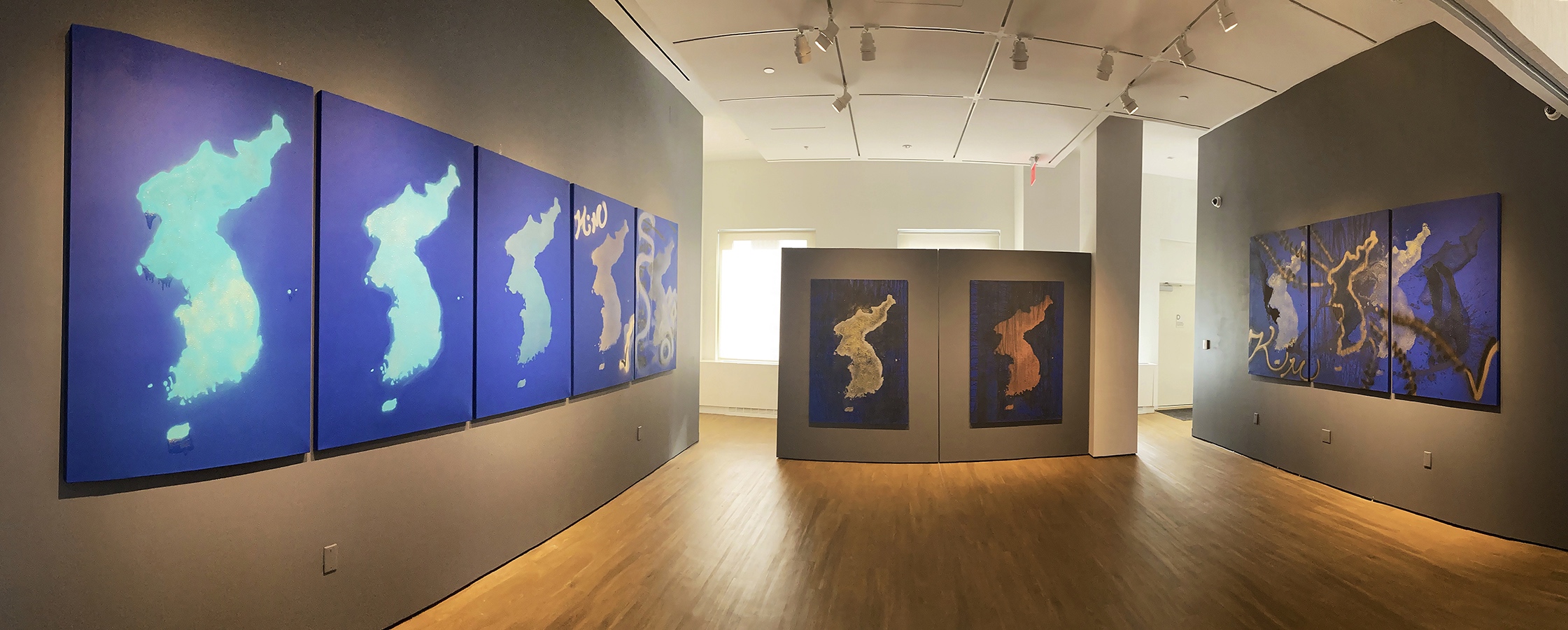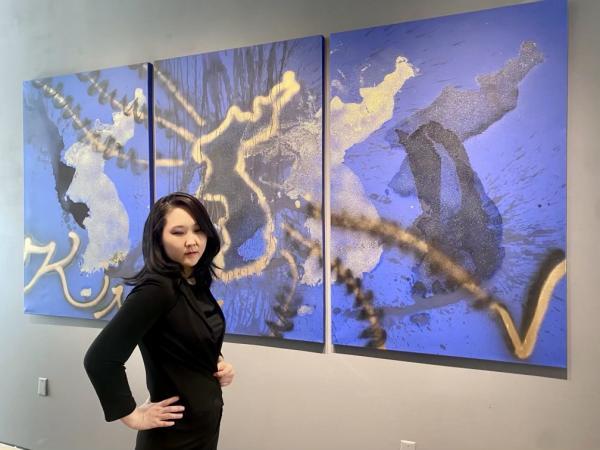About the Artist
Mina Cheon (천민정) (b. 1973, Seoul, South Korea) is a global Korean new media artist, scholar, and educator who lives and works between Baltimore, New York, and Seoul and exhibits her political pop art known as “Polipop” internationally. Being a part of the Korean diaspora, Cheon’s art results from a life-time of working with a postcolonial and comparative cultural lens and making contemporary art that is in historic alignment to appropriation art and global activism art, while focusing on North Korean awareness, Korean unification, and global peace projects. Along these themes, an ongoing project includes EatChocopieTogether.com, an interactive digital art piece created in collaboration with the Asia Society Triennial and her participation as a Triennial artist at the Asia Society Museum in New York and her current solo show is up at The Korea Society in New York till end of summer 2021. Cheon had solo exhibitions at the Ethan Cohen Gallery (2014, 2017-18, 2020-2021) and Lance Fung Gallery (2012) in New York; Trunk Gallery (2014), Sungkok Art Museum (2012), and Insa Art Space (2004-5) in Seoul, Korea; Maryland Art Place (2012) and C.Grimaldis Gallery (2008) in Baltimore. She has also exhibited her work and/or is in the collection at the Seoul Museum of Art, Noyes Museum of Art, Seoul Olympic Museum, American University Museum, Smith College Museum of Art, Baltimore Museum of Art, and participated in the 2018 Busan Biennale. Cheon is a Full-time Professor at the Maryland Institute College of Art (MICA); she received her PhD in Philosophy of Media and Communications from the European Graduate School, European University for Interdisciplinary Studies, Switzerland; MFA in Imaging Digital Arts from UMBC: An Honors University in Maryland; MFA from the Hoffberger School of Painting, MICA; BFA in painting from Ewha Womans University.Mina Cheon website MinaCheon.com Mina Cheon website Mina Cheon Portfolio on Baker Artist Mina Cheon website Mina Cheon Studio on Facebook
Featured Work
Photos
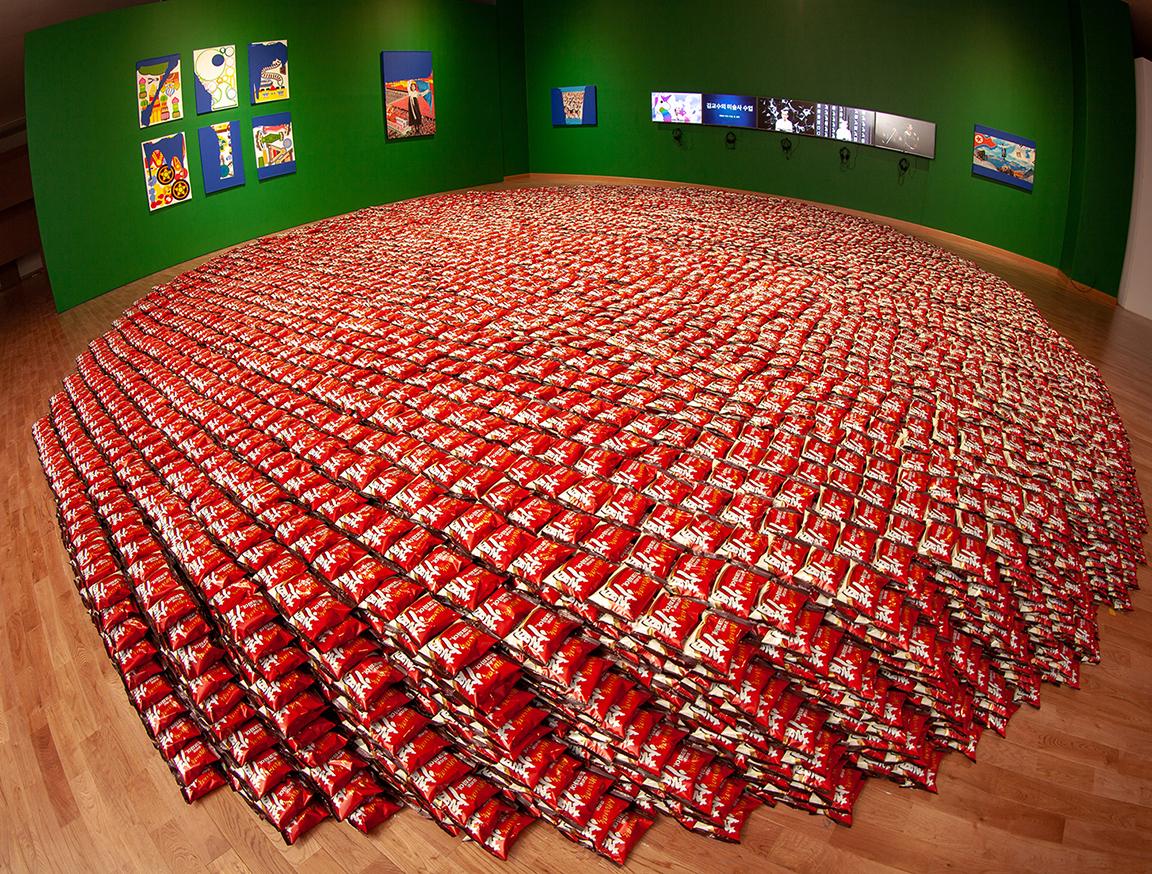
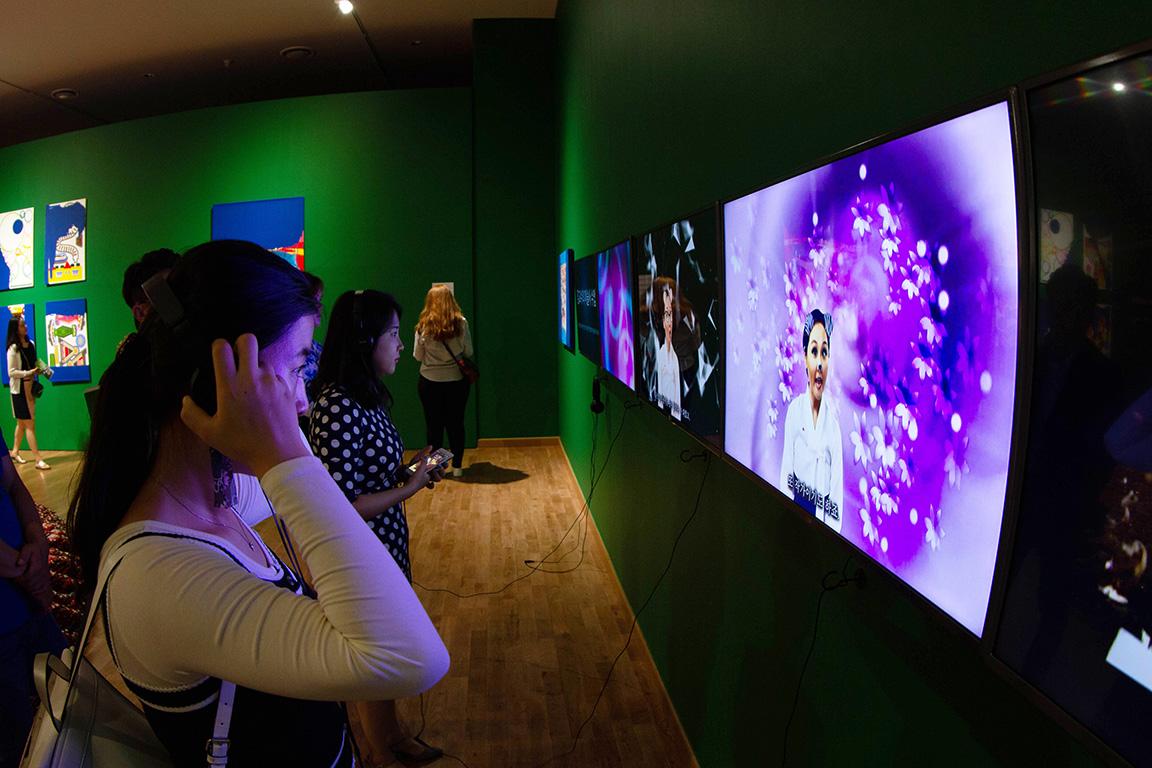
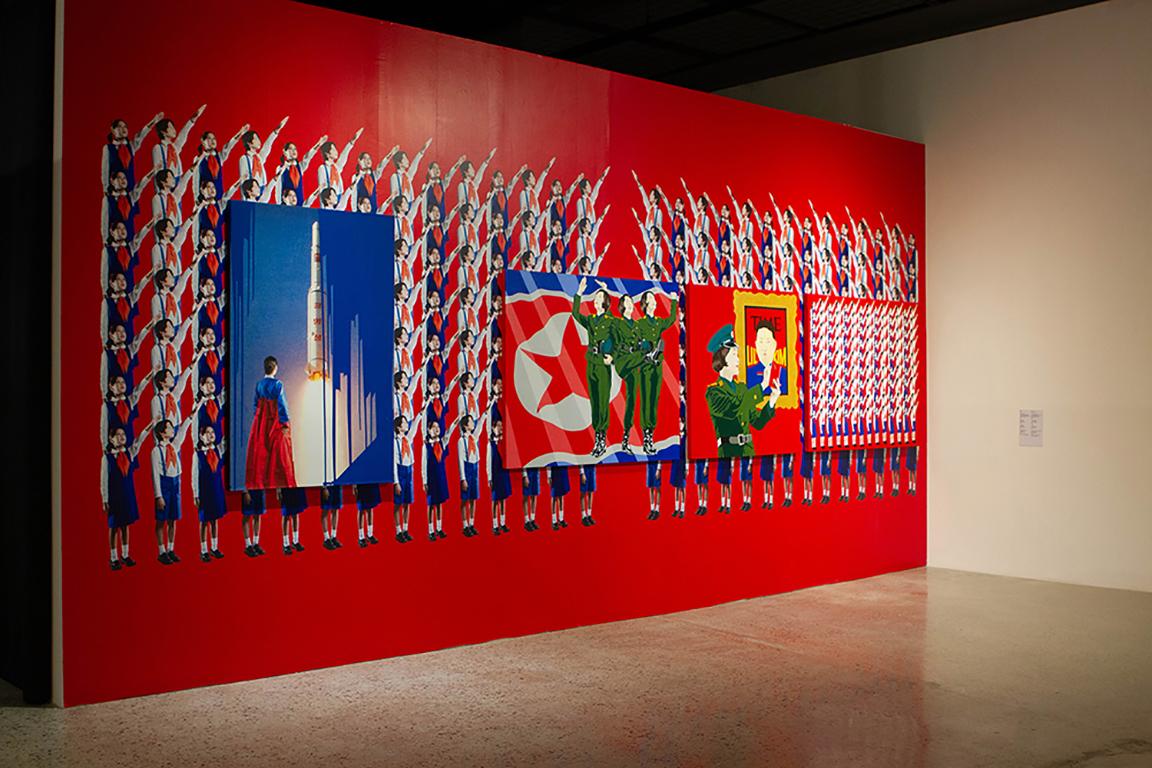
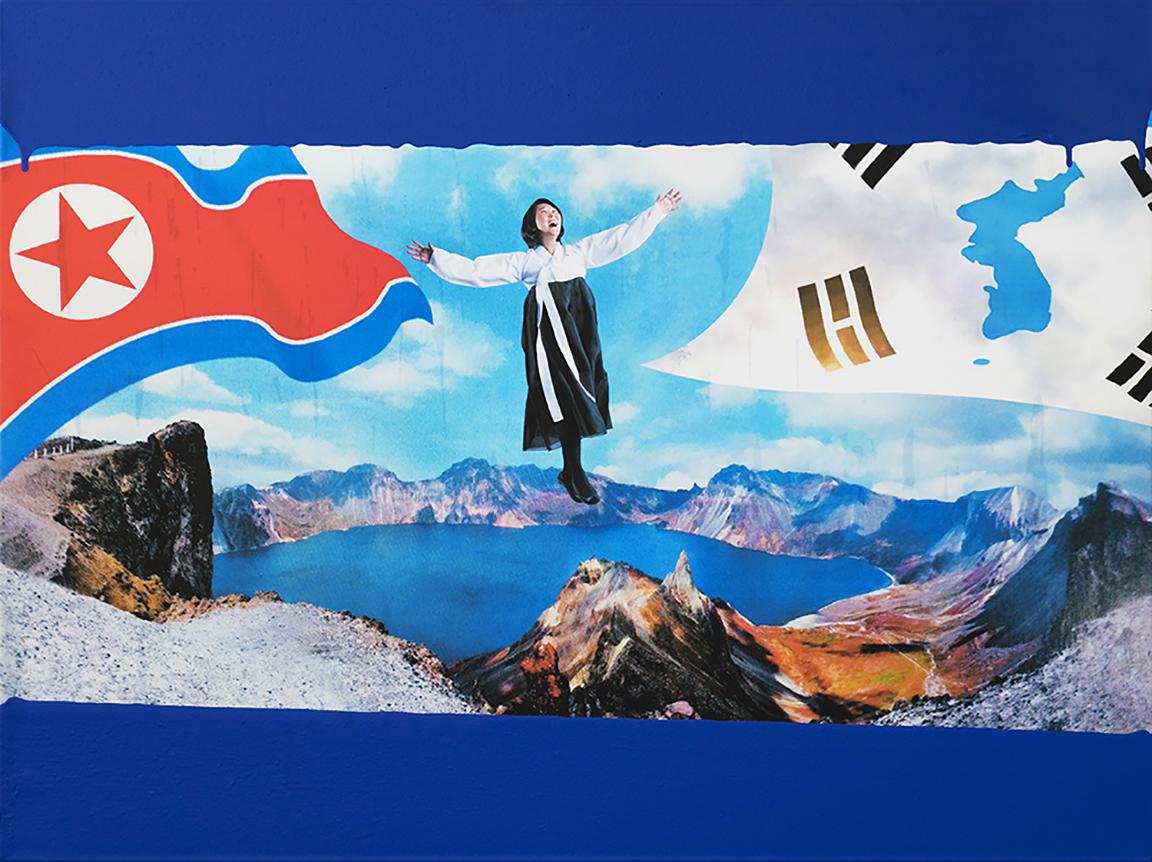
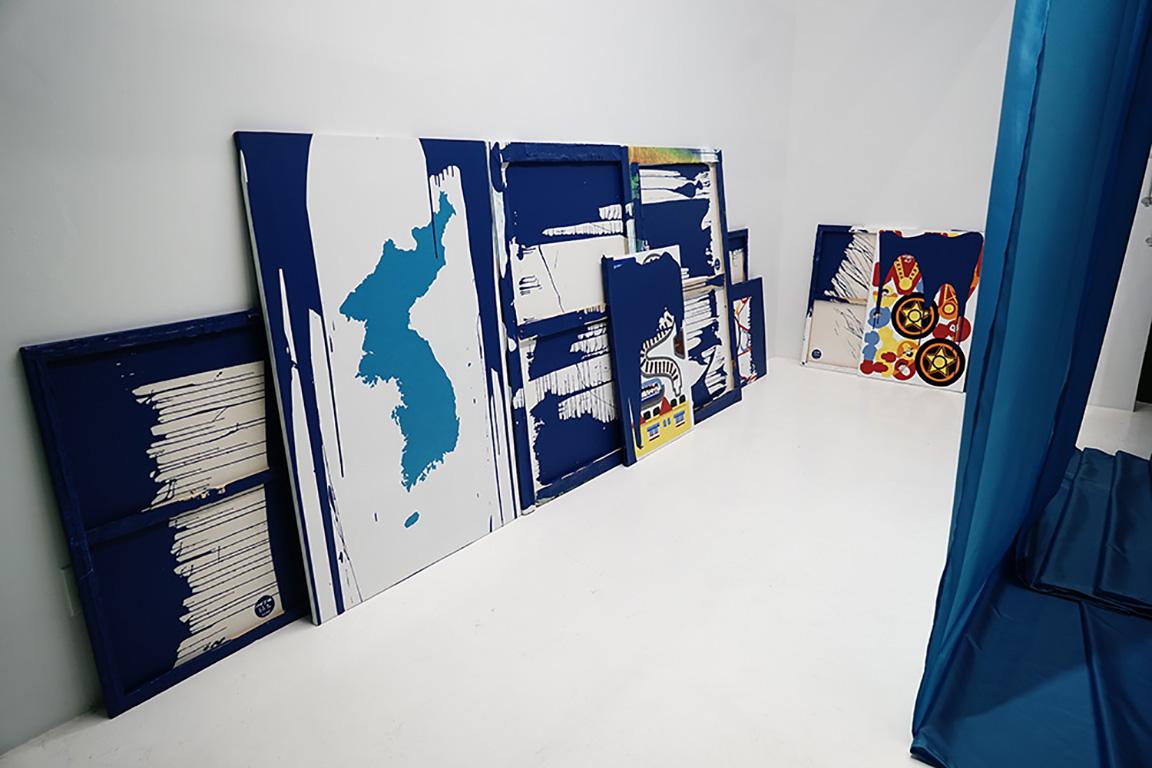
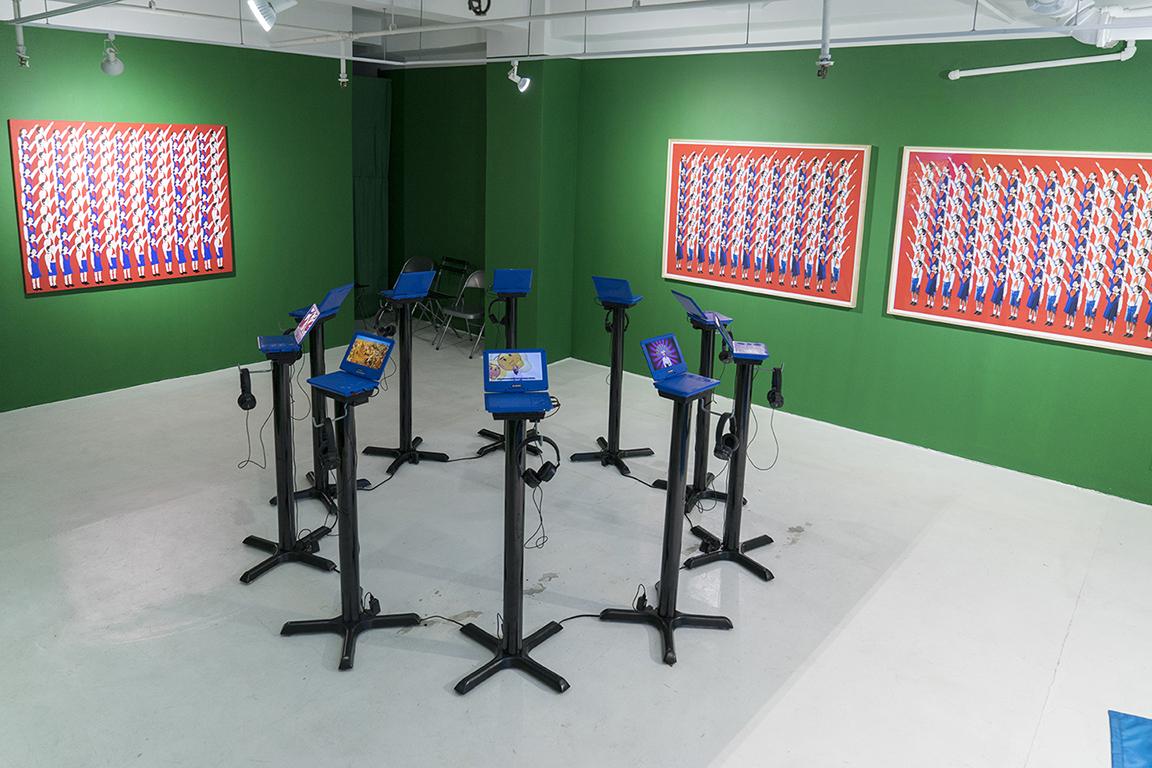
Featured Work: Photos
Eat Chocopie Together
100,000 Chocopies for the audience to eat
2018
100,000 Chocopies installed for the audience to eat during the Busan Biennale 2018. Manufactured in S.Korea, the Chocopie is known as the number one imported good in North Korea and has become the cultural symbol of unification between the two Koreas. The Chocopies were donated by the manufacturer Orion Co.
Video Art History Lessons by Professor Kim
Video art
2017-2018
Alongside the chocopie installation, the videos sent into North Korea were shown nearby as an installation. As a part of global activism known as media penetration into North Korea, the artist produced the video art history lessons with North Koreans in mind and sent them into North Korea.
Arirang: Mass Games
Mixed media installation
2018
During the Busan Biennale 2018, Cheon’s work was installed in Museum of Contemporary Art (MoCA) Busan in S.Korea. Here, the installation highlights a series of paintings and prints as echoing the aesthetics of North Korean Mass Games, with the art Happy North Korean Children photographic vinyl wall as a backdrop.
Umma Rises: Towards Global Peace
Digital print and painting on canvas
2017
From a series of dream paintings with custom-made New IKB paint and North Korea propaganda imagery printed on canvas. With Cheon’s parents having come from Northern regions of Korea, Cheon carries the transgenerational trauma of the peninsula’s unfortunate history of colonization and war and acts as symbolic peacemaker with her work.
Unification Flag and Dream Paintings
Painting installation
2017-2018
Installation at solo-show “UMMA : MASS GAMES” at the Ethan Cohen Gallery NY in 2017-2018. This is a series of dream paintings stacked like card games in the gallery, symbolizing new ways of playing underground in North Korea, with the center piece being the Korea’s third flag, the Unification flag.
Video Art History Lessons by Professor Kim
Video art installation
2017
Installation at solo-show “UMMA : MASS GAMES” at the Ethan Cohen Gallery NY in 2017-2018. As a part of global art activism for North Korean human rights, the videos were simultaneously sent into North Korea in hundreds by USB-drives with other care package items by North Korean defectors in S.Korea.
